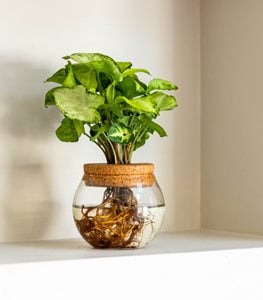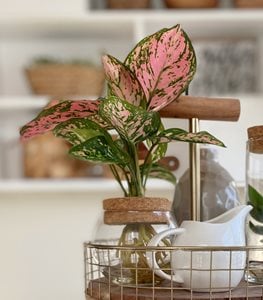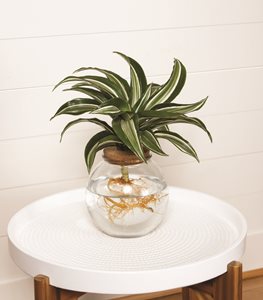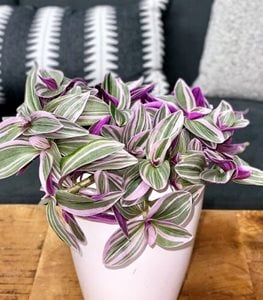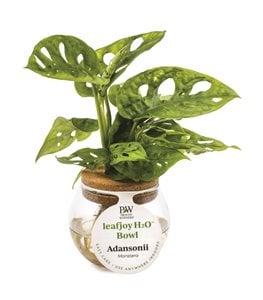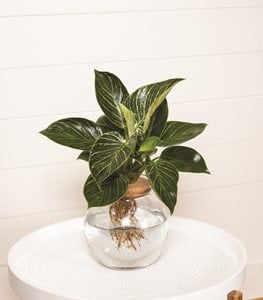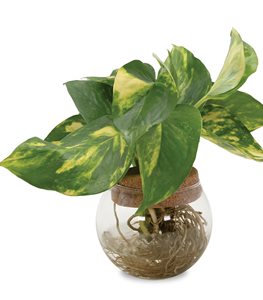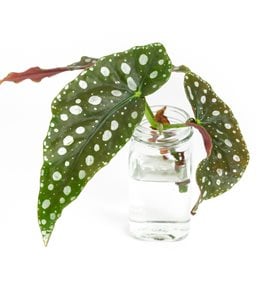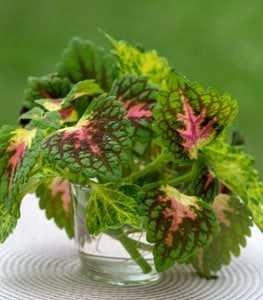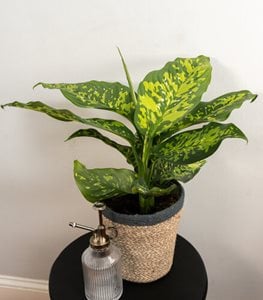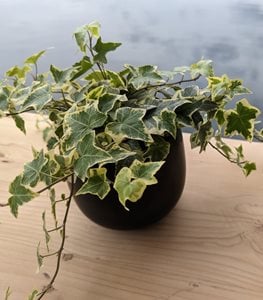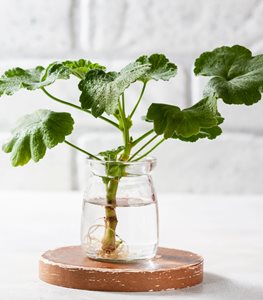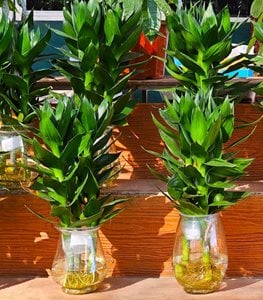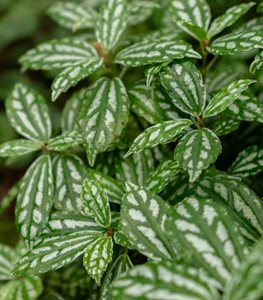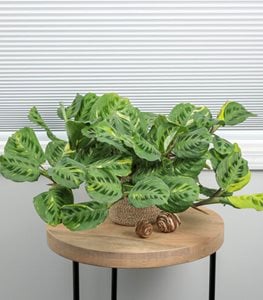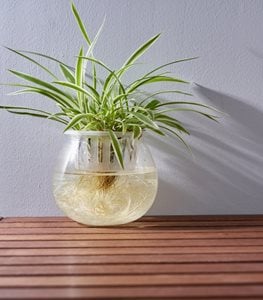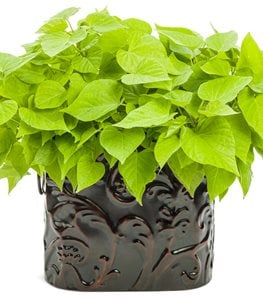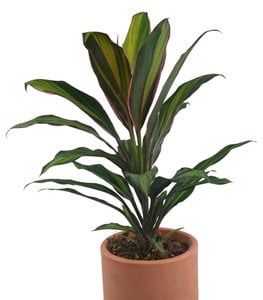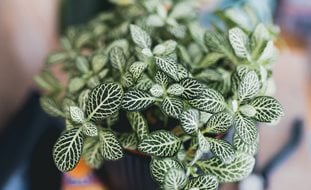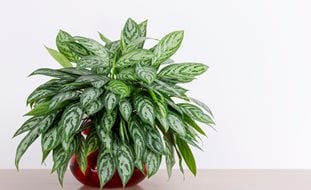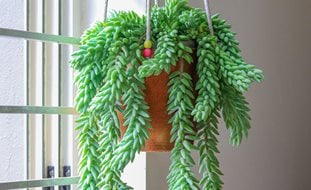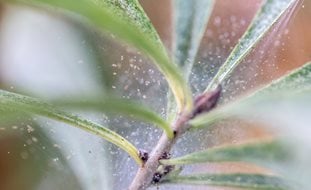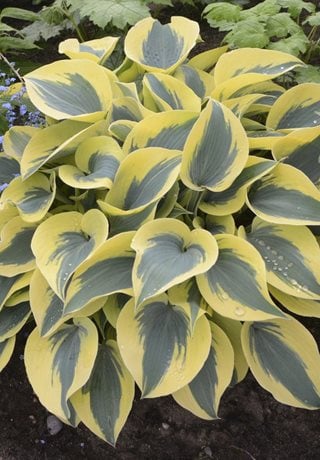18 Plants That Grow in Water Indoors (& How to Grow Them)
Grow plants in water without all the fuss and mess of soilGardeners and houseplant enthusiasts typically raise plants in soil potting mix, which is the medium that most plants need in order to thrive. However, some plants can be successfully grown in water. This method, known as hydroponic gardening, can be used to propagate new plants, or as a long-term alternative to growing plants in a soil medium.
Growing plants in water requires less maintenance, which is beneficial for those with a busy lifestyle who may forget to water their plants. By eliminating soil, plants are less prone to pests and diseases. Plants grown in water need less space and add their own unique decorative touch to indoor living spaces. Find out more about the best plants that will thrive in a soilless environment, along with how to take care of water-grown plants.
On this page: Plants that Grow in Water | Tips for Growing Plants in Water | Frequently Asked Questions
On this page:
PLANTS THAT GROW IN WATER
ARROWHEAD VINE (Syngonium podophyllum)
Low to medium light
Named for the arrow-shaped leaves, this tropical houseplant is grown for the foliage in a range of colors and patterns. To grow Syngonium in water, cut off a mature stem just below a growth node, which appears as a small bump along the stem. Submerge lower leaf nodes in water. Plants will grow roots in a matter of weeks. Learn more about growing arrowhead vines.
Pictured: Falling Arrows® Glacier Reign™ Arrowhead Vine has a compact bushy habit and green leaves with frosted white variegation.
CHINESE EVERGREEN (Aglaonema spp.)
Low to medium light
Chinese evergreen is an easy-care tropical houseplant with large leaves in an array of bright colors and patterns. To grow Aglaonema in water, cut off a healthy mature stem at the base of the plant and submerge the cut end in water. Roots will begin growing within several weeks. Learn more about growing Chinese evergreen plants.
Pictured: Igneous™ Ruby Crab™ produces showy lance-shaped pink leaves with dark green splotches and margins.
DRAGON TREE, CORN PLANT (Dracaena spp.)
Low to high light
Dracaena (also called dragon tree or corn plant) are tropical plants grown as indoor houseplants or tender outdoor perennials. There are many different varieties that thrive in a range of light conditions, and are characterized by an upright habit and medium-wide grass-like leaves in different colors and patterns. To grow Dracaena in water, cut a mature healthy stem and remove most of the leaves, with only a few leaves remaining at the top. Submerge the cut end in water, making sure that no leaves are below the water line. Plants will develop a healthy root system in 2 months.
Pictured: Submerged Relics™ Nifty Nautilus™ produces strappy, sword-shaped, green-and-white-striped leaves.
INCH PLANT (Tradescantia spp.)
Medium to high light
Also known as spiderwort, tropical species of inch plant can be grown outdoors in warmer months, or indoors as a houseplant. Grown for the trailing habit and decorative foliage, the slender pointed leaves come in an array of colors and patterns. To grow in water, cut a stem just below a leaf node and place the cut end in water. Tradescantia can be grown in water indefinitely or replanted in potting soil. Learn more about how to grow tradescantia plants.
Pictured: The foliage of New Vogue™ Feeling Flirty™ is uniquely stunning, with green, white and pink striping and a burgundy-pink underside.
SWISS CHEESE VINE (Monstera spp.)
Low to medium light
Also known as monstera, this highly coveted houseplant is grown for the climbing habit and exotic leaves that develop slits and holes as they mature. This vining plant is commonly propagated through stem cuttings. Remove a stem with at least one healthy leaf and a growth node. Place the cut end in water until roots develop, which can take several months. Change water weekly to discourage bacteria and stem rot. Replant in fresh potting soil mixed with orchid bark for extra drainage. Learn more about how to grow Swiss cheese plants.
Pictured: Mysteria® Adansonii Swiss cheese vine from Proven Winners.
PHILODENDRON (Philodendron spp.)
Low to medium light
Philodendron are common easy-care houseplants that tolerate lower light conditions, making them a good choice for beginners. This tropical plant has an upright or trailing habit, with attractive leaves in an array of shapes, colors and patterns. Plants are easy to grow in water from stem cuttings. Trim off a stem just below a node and place the cut end in water. Learn more about how to grow philodendron plants.
Pictured: Prismacolor™ Birkin philodendron has an upright habit and glossy oval-shaped green leaves with slender creamy-white pinstripes for sophisticated elegance.
POTHOS (Epipremnum aureum)
Low to high light
One of the easiest houseplants to grow, pothos is a popular choice for beginner houseplant growers. There are many different varieties, characterized by a trailing habit and heart-shaped foliage in a range of colors and patterns. This water lover thrives in a water-only environment and is easy to propagate from cuttings. Cut a long vining stem into several sections with at least several leaves and growth nodes on each. Place stems in water, taking care not to submerge lower leaves. Cuttings can be grown in water indefinitely or repotted in fresh soil. Learn more about growing pothos plants.
Pictured: The marbled leaves of Beautifall® Summer Nights™ pothos are medium green with irregular splotches of yellow.
BEGONIA (Begonia spp.)
Low to high light, depending on the type
Begonia is a versatile tropical plant that can be grown outdoors during warmer months, or indoors as a houseplant. Some species are grown for the long-blooming flowers in shady garden beds, while fancy leaf types are valued for the attractive foliage in different colors and patterns. Plants can be propagated from cuttings and grow easily in water. Cut a stem with at least a single leaf back to the base and place the cut stem in water. Change water frequently to prevent stem rot. Roots can take two months to develop. Learn more about growing begonia plants.
COLEUS (Coleus scutellarioides)
Low to high light, depending on the variety
One of the most popular garden plants, Coleus, is a tropical plant grown for the foliage that comes in a nearly endless array of colors and patterns. Plants are most often grown outdoors in warmer months and can also be grown indoors as a houseplant. Coleus is often propagated from cuttings that are grown in water and overwintered indoors to replant outdoors the following season. Trim off stems with at least 4 to 6 inches of growth and remove the lower leaves. Place the cut end in water, submerging the nodes where the leaves were removed. Change water regularly to prevent stem rot. Roots grow within several weeks. Learn more about growing coleus plants.
DUMB CANE (Dieffenbachia spp.)
Bright indirect light
This common tropical houseplant is easy to grow and forgiving of a range of growing conditions. Dieffenbachia has a thick main trunk, upright tree-like habit, and large patterned leaves in colors of green, white, and yellow. Dieffenbachia can be grown in water, though plants will not reach their full size. Cut stems into lengths of 4 to 6 inches and remove bottom leaves. Place the cut end in water and change water weekly to refresh oxygen and discourage algae growth. Provide bright indirect light. Roots will take several weeks to form. Learn more about growing dumb cane plants.
ENGLISH IVY (Hedera helix)
Bright indirect light
These common hardy vines can be grown outdoors, or as indoor plants. Hedera has an aggressive growth habit and attractive lobed leaves in solid or variegated patterns. Plants are invasive in some regions, where they should only be grown indoors. Ivy cuttings are easy to grow when rooted in water. Cut stems at least several inches long, remove bottom leaves and place in water on a windowsill. Roots take 2 to 3 weeks to form. Hedera can be grown in water indefinitely.
GERANIUM (Pelargonium)
Bright indirect light
Geraniums are popular bedding plants grown for the colorful long-lasting flowers and decorative foliage. Not to be confused with hardy geranium, Pelargonium is a tender perennial most often grown as an annual. The fleshy stems root easily in water, making it a good plant to propagate from cuttings. Use healthy stems and make cuttings at least 6 inches long. Remove the bottom leaves before submerging in water. Change water every few days and don’t allow the water to become stagnant, which can cause rot. Plants will not grow in water indefinitely and are best planted in soil as soon as roots develop. Learn more about how to grow geranium plants.
LUCKY BAMBOO (Dracaena sanderiana)
Low to bright indirect light
Dracaena sanderiana is a plant that grows in either water or soil and is named for the bamboo-like segmented stems and lush foliage. This popular houseplant is a traditional housewarming gift that is thought to bring good luck. Plants are more often grown in water and commonly displayed in clear glass containers filled with pebbles, which give plants more stability. Lucky bamboo plants thrive in water indefinitely.
ALUMINUM PLANT (Pilea cadierei)
Bright indirect light
This tropical houseplant, native to Vietnam, is named for the oval dark green leaves overlaid with metallic silver patterns. Plants are easy to care for and forgiving of different growing conditions. Pilea is easy to propagate from stem cuttings and can be grown in water or soil. Select a healthy stem with at least 2 to 3 leaves and remove bottom leaves before placing the cut end in water. Roots will develop in several weeks. When grown hydroponically, fertilize monthly with a few drops of liquid fertilizer.
PRAYER PLANT (Maranta spp.)
Medium to bright indirect light
Maranta is a popular houseplant grown for the exotic-looking foliage in different colors and patterns. Named for the light-sensitive leaves that fold up at night, Maranta can be grown in water and rooted from stem cuttings. When grown hydroponically, provide nutrients with a few drops of liquid fertilizer every 3 to 4 weeks. Prayer plant may be sensitive to hard tap water. Use filtered water or leave tap water out overnight before using, and make sure water is at room temperature. Read more on growing prayer plants.
Pictured: Siesta® Say Grace™ prayer plant features elliptical-shaped leaves in various shades of green that grow in a spiraling, trailing habit.
SPIDER PLANT (Chlorophytum comosum)
Medium to bright indirect light
This popular houseplant is grown for the variegated grass-like foliage, elegant arching habit and small spider-like offshoots that form on long stems. Spider plant is easy to grow and propagate in water. Remove a group of leaves from the base of the plant or snip off new plantlets and place in water. Change water every few days, avoid submerging leaves under the water, and fertilize monthly. Pebbles can be placed in the bottom of containers to give roots something to grab onto. Read more on growing spider plants.
SWEET POTATO VINE (Ipomoea batatas)
Medium to bright indirect light
Ipomoea is a tuberous warm season annual with decorative foliage in a wide range of shapes and colors. This popular trailing ornamental plant is used in beds, mass plantings, and containers. The tubers or stems root easily in water. Cut a stem at least several inches long, remove bottom leaves and place the cut end in water to root in 10-14 days. Tubers can be suspended over water with the pointed end submerged to encourage new roots and leaves. Replenish water frequently to discourage bacteria and algae from forming. Read more on growing sweet potato vines.
Pictured: Sweet Caroline Sweetheart Lime features chartreuse green leaves and a trailing habit.
TI PLANT (Cordyline spp.)
Bright indirect light
This versatile foliage plant can be grown as a tender perennial or annual outdoors, or as an indoor houseplant. Cordyline has an upright habit and spiky leaves in different colors. Plants prefer regular moisture and grow easily in water. To make cuttings or grow in water, take a 5-to-8-inch segment from a healthy stem and submerge the lower stem in distilled or non-chlorinated water. New roots will form in 10 to 14 days. When grown in water, fertilize every few weeks with a few drops of liquid fertilizer.
Find more plants to grow in water from the Proven Winners leafjoy™ H2O collection.
TIPS FOR GROWING PLANTS IN WATER
For the best results, follow these suggestions when growing plants in water:
Choose containers: Any type of container that holds water can be used for growing in water. Clear glass vases, bottles and jars are aesthetically pleasing to show off a plant's intricate root system. A glass jar or other vessel allows you to easily see the water level and clarity to determine when to add or change water. Though almost any type of container that will hold water is sufficient.
Change water regularly: When water is allowed to sit, it loses its oxygen content, allowing bacteria and algae to thrive. Poor water quality can result in fungal diseases and stem or root rot, causing plants to become stressed or die. Change water once or twice a week, or when water becomes cloudy. Scrub the sides of containers to remove algae or other residue before replenishing with fresh water.
Use purified water: Some plants are sensitive to chlorine or other chemicals in tap water. If your plants are failing to thrive, try using distilled, purified or rainwater. If your tap water is heavily chlorinated, allow it to sit overnight before using, which will allow time for chlorine to evaporate.
Fertilize: Since water does not provide nutrients, plants grown in water will benefit from regular fertilizing. Use a few drops of all-purpose liquid fertilizer every few weeks. You can also use a fertilizer especially formulated for hydroponic growing according to package instructions.
Keep it clean: When making cuttings, use a clean sterilized knife, pruners or scissors to prevent the spread of diseases.
Remove leaves: When placing plants in water, remove lower leaves and avoid submerging any leaves in water, which can cause diseases and rot.
FREQUENTLY ASKED QUESTIONS
Can you grow plants in water permanently?
Some plants will only grow in a soil medium, while others can be grown in water for a short time or permanently. Know your plant’s individual growing needs before attempting to grow in water.
What plants are the easiest to grow in water?
Some plants thrive in water-only environments and can even be grown in water permanently. These include monstera, spider plant, English ivy and lucky bamboo.
*REGARDING PROPAGATION: There are strict rules in place prohibiting reproduction or propagation of patented plants (check your plant tags for ® or ™ symbols next to the plant name). This means you can't reproduce them (even for use in your own garden), sell them, or bring them into the country without permission. The law does not make exceptions for what some might consider minor infringements. Any unauthorized use of patented plants is considered an infringement.

